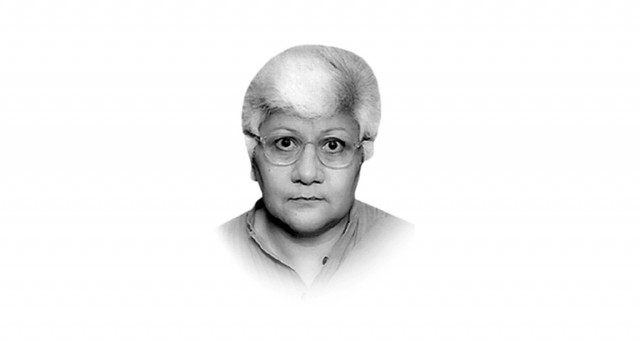The Bangle-lore syndrome
International sports promote goodwill, friendship and solidarity among nations which help in cementing of ties.

Orwell was contesting the idea that international sports promote goodwill, friendship and solidarity among nations and that the sporting spirit is central in the cementing of these ties. In our own context, we have all observed cricket hyper-nationalism, which is also extremely gendered because defeat is considered akin to being feminine and victory is a sign of masculine prowess. The national team was sent a set of bangles after its defeat against India in Bangalore in the 1996 cricket World Cup, as a symbol of feminisation. This bangle-lore syndrome is evident in the hysterical media frenzy over today’s India-Pakistan contest.
Watching the excited predictions and counter-predictions on virtually every channel, I was reminded of another era of cricket when I was growing up in the 1960s and 1970s. I felt nostalgic because I remembered that cricket was then a game, a fun sport, even between nations. It was considered a ‘gentleman’s game’, one characterised more by grace than by violent outbursts and orgies of hatred. If someone was not being fair, it was said, ‘that’s not cricket’.
The whole family would gather around the small Zenith transistor radio to listen to the commentary. Television did not make an appearance until November 1964 and there was no such thing as direct via satellite. We would eat, drink, laugh and enjoy a good game with family and friends, and share the breathtaking moments when Hanif Muhammad would score a century, Asif Iqbal would hit a six or Sarfraz Nawaz would take seven wickets in one innings. Cricket was played in clean white uniforms and the ball was red. In the sixties, we had not heard of one-day cricket, so we remained glued to our transistor sets for five days except when we had to go to school or college.
I remember the desire for our players to win and to entertain. But I don’t remember such virulent animosity, such raging aggression, such violent attacks of coke bottles and ‘missiles’ on the players of the opposing team when it won, or our own team when it lost. In those days, teams were not pelted with stones, welcomed with shoes or sent bangles when they lost — everybody would say, “well, it’s a game, somebody has to win, the important thing is to play well and do your best”. You win some, you lose some.
Even more interestingly, I remember that we cheered the Indian team when someone played well. We celebrated a six by Sunil Gavaskar or a good wicket-taking ball by Kapil Dev as much as a wicket by Imran Khan or a boundary by Inzamamul Haq in the later decades. There were many Pakistani fans of Indian cricketers and vice versa. And, except when India and Pakistan played against each other, the spectators of each country cheered each other! I still remember the glorious years of hockey when the irrepressible Islahuddin and Shahnaz or the unstoppable Samiullah and Rashid Junior would blaze their way to the goal. Every time our hockey team played the Australians or the Dutch, the Indians would side with Pakistan and vice versa. There was a feeling of affinity and affability between the South Asian neighbours, at least in sports.
It was the sport itself that we enjoyed — technique, style and quality. Regardless of who entertains with a dazzling batting performance or a masterly bowling display, there is great pleasure in seeing excellence. Going down memory lane, I remember marvelling at the batting technique of Sachin Tendulkar. He seemed to score so effortlessly, seemingly without any extra expenditure of energy, he would lightly touch the ball and it would race to the boundary. And I recall thinking that he is a sporting artist, not just a player. Similarly, I have vivid memories of watching Waseem Akram come in to bowl — no long run up and no apparent application of excessive energy that we see in the derailed ‘Rawalpindi Express’; yet every ball by Waseem was a beauty, every ball innovative and different from the previous one. Surely, another artist.
Cricket ultranationalism has overshadowed the enjoyment of the game’s elegance and beauty. It is now all about winning; money, national pride, chauvinism and animosity. I miss the old white-uniform, red-ball days of cricket. If we want to bring the fun back into the game, let’s enjoy today’s match without being so obsessed with winning. Let’s applaud each beautiful stroke of the bat, irrespective of who plays it. Let’s enjoy every wicket taken well, no matter which side takes it. Let’s appreciate good fielding, regardless of who displays it. Let’s bring cricket back into cricket and take out the dark cloud of phony patriotism hanging over it. There are better ways of being patriotic, like asking for peace, for instance. Today, if Pakistan wins, I win because I am a South Asian and a Pakistani; if India wins, I win because I am a South Asian. In each case, it is a win-win situation for all of us.
Published in The Express Tribune, March 30th, 2011.









1733130350-0/Untitled-design-(76)1733130350-0-208x130.webp)




COMMENTS
Comments are moderated and generally will be posted if they are on-topic and not abusive.
For more information, please see our Comments FAQ